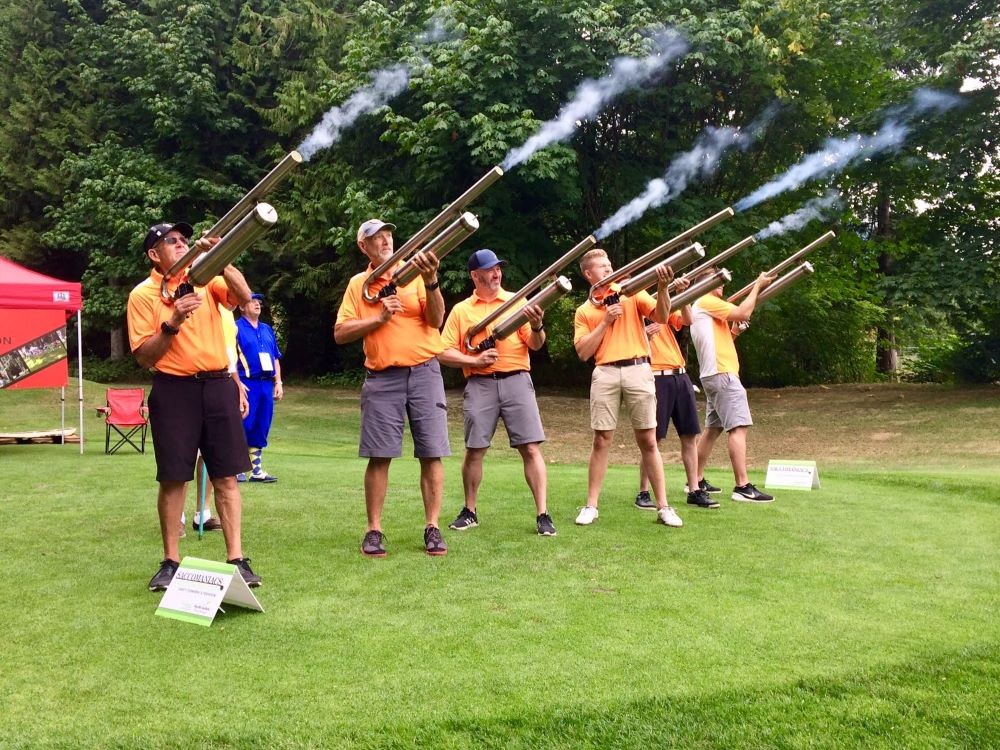Exploring the Power and Precision of Golf Ball Air Cannons
Introduction: In the realm of recreational engineering and DIY projects, few things captivate the imagination like a powerful air cannon. Among these, the golf ball air cannon stands out as a fascinating creation, blending elements of science, engineering, and sporting enthusiasm. This article delves into the mechanics, construction, and potential applications of the golf ball air cannon.
Understanding the Golf Ball Air Cannon: A golf ball air cannon is essentially a pneumatic device designed to propel golf balls at high speeds over considerable distances. The basic principle behind its operation lies in the rapid release of compressed air, which generates the force necessary to launch the golf ball. These cannons can vary in size, complexity, and power, from handheld versions to larger, more elaborate setups.
Mechanics of Operation: At the heart of a golf ball air cannon lies a chamber for compressed air and a valve mechanism for releasing it. Typically, users pressurize the chamber using a pump or an air compressor. Once the desired pressure is achieved, opening the valve allows the built-up air to rush into the barrel, propelling the golf ball forward. The force generated depends on factors like air pressure, barrel length, and diameter.
Construction and Components: Building a golf ball air cannon requires Golf Ball Cannon Companies careful consideration of materials and design. The main components include:
- Chamber: This holds the compressed air and is usually constructed from PVC pipe or metal cylinders.
- Barrel: The barrel guides the golf ball and ensures a straight trajectory. It’s often made from PVC or metal tubing.
- Valve System: The valve controls the release of compressed air into the barrel. Options range from simple ball valves to more sophisticated pneumatic or solenoid valves.
- Pressure Gauge: Essential for monitoring air pressure within the chamber, ensuring safe operation.
- Support Structure: Depending on the cannon’s size, a stable base or mounting system may be necessary for safety and accuracy.
Applications and Uses: Golf ball air cannons have a wide range of applications beyond mere entertainment. Some potential uses include:
- Golf Course Maintenance: Cannons can launch balls to retrieve lost equipment or test course layouts.
- Research and Development: Engineers and researchers use air cannons to study the aerodynamics of golf balls and improve their design.
- Entertainment and Competitions: Events such as distance competitions or accuracy challenges add a fun element to gatherings or fundraisers.
- Education: In educational settings, these cannons serve as engaging tools for teaching principles of physics, such as projectile motion and energy transfer.
Safety Considerations: While golf ball air cannons offer excitement and experimentation, safety should always be paramount. Users must adhere to safety guidelines, including:
- Wearing Protective Gear: Eye protection is essential, as well as gloves when handling pressurized components.
- Pressure Limits: Never exceed recommended pressure limits for the materials used in construction.
- Secure Setup: Ensure the cannon is securely mounted or held during operation to prevent accidents.
- Clear Firing Range: Maintain a clear area downrange to prevent injury or property damage.
Conclusion: The golf ball air cannon exemplifies the marriage of ingenuity and recreation, offering enthusiasts a platform for exploration and enjoyment. From backyard experiments to scientific endeavors, these devices continue to capture the imagination of DIYers, engineers, educators, and sports enthusiasts alike. As with any project involving pressure and propulsion, safety and responsible usage remain paramount, ensuring that the thrill of launching golf balls is enjoyed responsibly and safely by all.